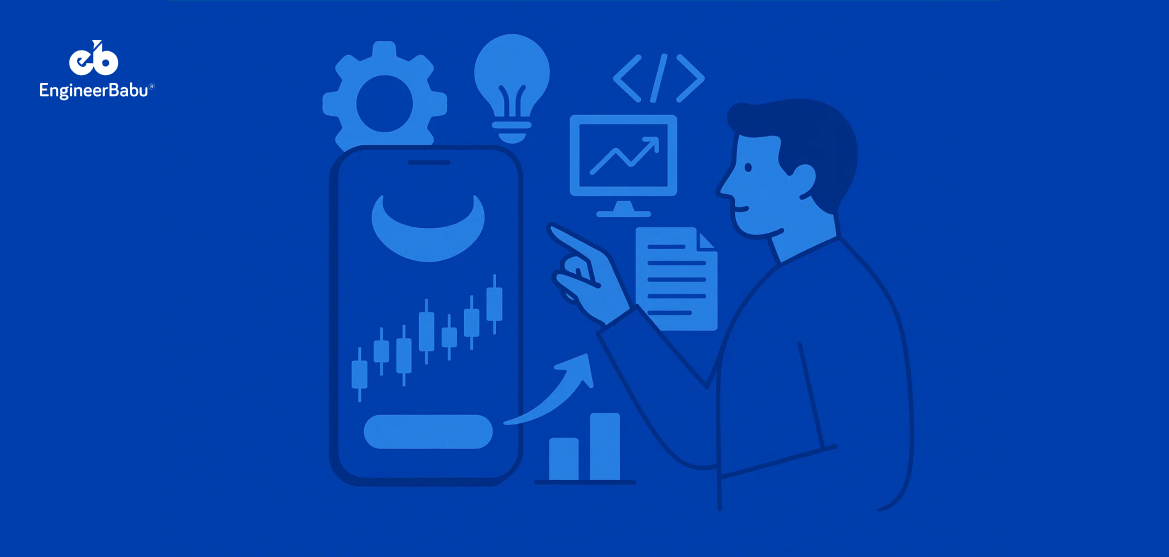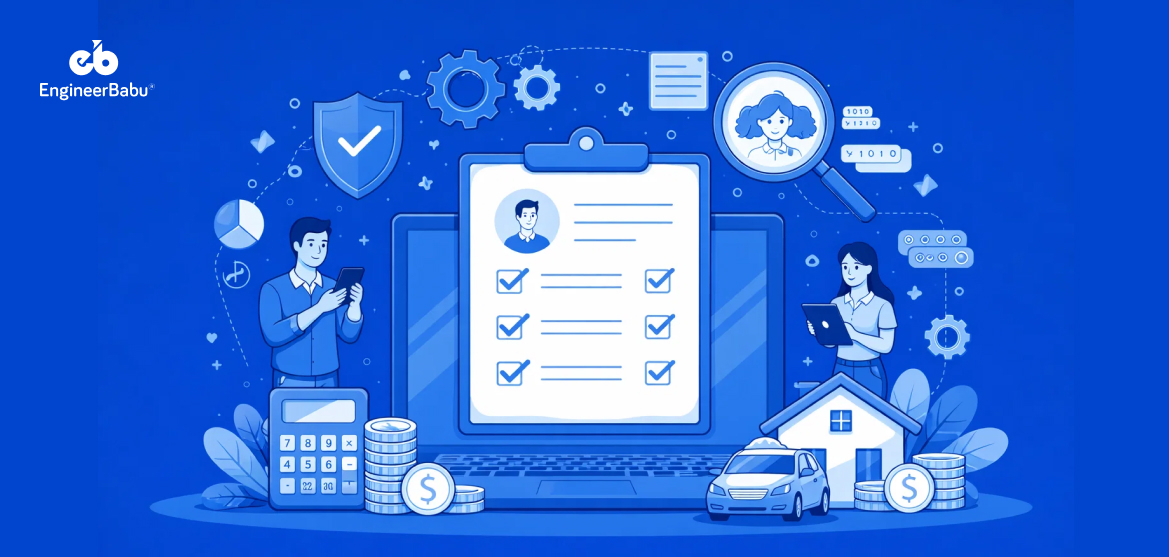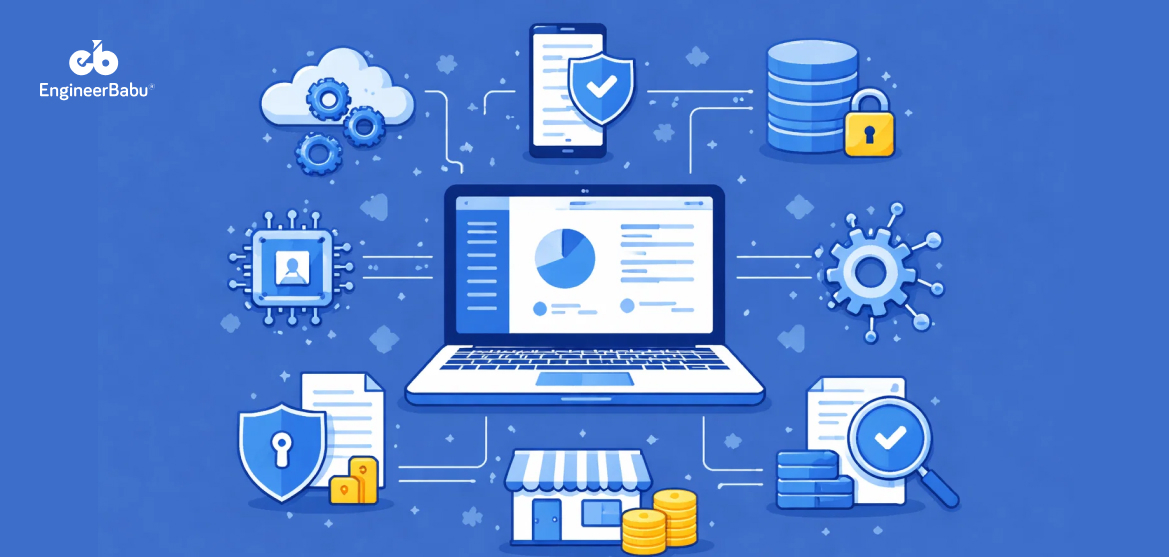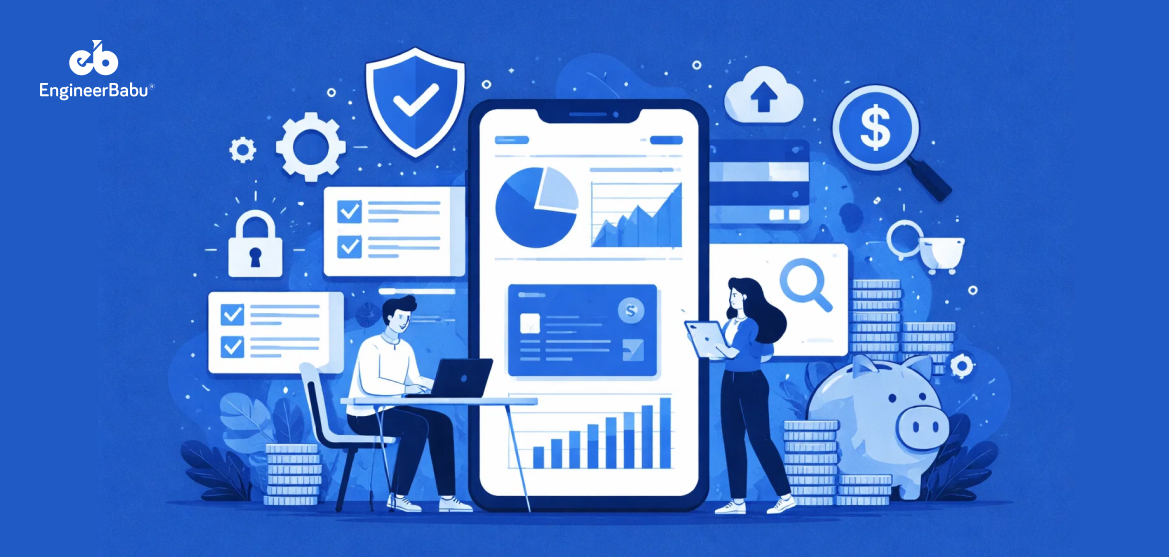Imagine pulling out your phone, launching your app, and within seconds placing a trade, checking your portfolio, and tracking live market movements. That instantly clickable experience? That’s exactly what apps like Webull have perfected and why they’re booming.
Here’s the kicker: today, about 60% of U.S. retail investors rely on mobile apps to manage their trading activity, as per Global Market Insights. That’s not a minor shift, it underlines how the smartphone has become the go-to trading desk for Americans.
So, what sets apps like Webull apart? It’s a clean, poised design and a secure, seamless user experience. Plus, all are compliant with the complex U.S. financial regulations.
In 2025, the real opportunity for fintech founders, especially here in the U.S., isn’t just to replicate Webull but to build something more adaptive.
But how do you do it?
Well, this post will walk you through exactly how to build an app like Webull, step by step. Let’s jump right into it.
What Exactly Is Webull?
Webull is a commission-free trading platform that has become a go-to choice for U.S. retail investors looking for a professional-grade experience. Launched in 2017, the app quickly gained traction by combining sleek design and advanced analytics that even seasoned traders find valuable.
Unlike bare-bones trading apps, Webull positions itself as a bridge between casual investors and professionals who want depth without paying premium brokerage costs.
Key Features That Make Webull Stand Out
- Zero-commission trading: Users can trade stocks, ETFs, and options without paying fees, a feature that reshaped investor expectations across the industry.
- Extended trading hours: Webull gives investors access to pre-market and after-hours sessions, a big win for active traders following global events.
- Advanced charting tools: Real-time data, technical indicators, and customizable charts cater to users who rely on technical analysis.
- Paper trading: A demo trading environment where beginners can practice strategies risk-free before investing real money.
- Fractional shares: Users can invest in big-name stocks without needing to purchase a full share, lowering entry barriers for smaller investors.
- Community and learning resources: Webull integrates social features, educational content, and news feeds to keep users engaged and informed.
- Strong security: Two-factor authentication, encryption, and regulatory compliance with SEC and FINRA reassure users that their funds and data are safe.
Webull’s rise is about offering a feature-rich, data-driven, and secure platform that appeals to both Gen Z investors starting out.
Step-by-Step process on how to build an app like Webull
Research and planning
Start with a simple plan that names your audience and the instruments you will support. Choose stocks, ETFs, options, crypto, or a narrow mix and explain why. Define account types, funding paths, and early limits.
Also, map major competitors and write down the rough spots their users mention. Then, estimate market size and acquisition costs in the U.S.
Finally, list the required regulations and the partners you will need. Keep it short, but clear. If someone asks How to build an App like Webull, your first answer should point to this one page.
Feature set planning
Organise features in layers so the team can move steadily. Core covers signup, identity, deposits, withdrawals, watchlists, quotes, charts, basic orders, positions, and statements. Next, add alerts, screeners, fractional shares, and extended hours.
For advanced users, consider options chains, paper trading, and social features. Tie each item to a single user job and one metric. Keep compliance visible with disclosures, suitability checks, audit logs, and exportable records.
Then rank features by value, risk, and effort so the roadmap reads like a clear sequence, not a wish list. Now, lock the MVP, write acceptance criteria, and confirm the release order.
Technology stack selection
Move to the technology part now. Pick a technology your team can operate at 9:30 a.m. on a busy market day. Use Go or Java development for low-latency services, and keep Python for analytics and background jobs. Store transactions in PostgreSQL, keep caches in Redis, and place statements in object storage.
Send real-time updates over WebSockets while keeping a safe polling fallback. React Native development for mobile and React for web help one team move faster. Choose vendors with strong SLAs for identity, KYC, ACH, and market data, and encrypt everything at rest and in transit.
Development process
Work in thin slices that run end to end. Build onboarding, identity checks, funding, and account states first, because everything depends on them. Then add quotes, charts, and simple market orders. Only after that, expand order types. Ship an internal alpha, fix crashes fast, and improve logs and metrics.
Thereafter, run a small beta with paper trading to test safely with real users. Agree on acceptance criteria tied to accuracy and latency. This is how you build an App like Webull when time and trust both matter.
Testing and quality assurance
Test the flows people use most and the moments that can break trust. Automate unit, integration, and end-to-end checks for identity, funding, quotes, orders, fills, positions, and statements.
Also, load test around market open, then soak test through the day and track latency budgets for quotes. Run security reviews, dependency scans, and a third-party penetration test. Practice failovers and rollbacks so you can recover fast without losing data.
Deployment and launch
Treat launch like a release train, not a one-off, keeping teams aligned. Freeze scope once disclosures and store listings are final, then use blue-green or canary pipelines with automatic rollbacks.
Then, submit builds and phase the rollout by device, region, and cohorts. As traffic rises, track crashes, latency, funding success, and rejects occur in real time. Publish a status page and incident playbooks. Brief support about issues. If a founder asks how to build an App like Webull, launch carefully, measure everything, and roll back quickly.
Post-launch maintenance
Operate with discipline as you learn. First, track activations, first funding, first trade, repeat trades, and churn. Then monitor quote latency, order placement, login errors, and payment failures. Next, review fraud signals, surveillance alerts, and daily reconciliations.
Also patch dependencies, rotate keys, and check vendor SLAs. Release small updates and measure the outcome before moving on. Share short tutorials and changelogs to reduce tickets.
Finally, schedule quarterly architecture reviews and disaster recovery drills so the platform improves without surprises for customers. Keep polishing onboarding and statements so users feel steady progress.
Conclusion
We covered the full path to a Webull-style app in the U.S.: define your niche, study competitors, and choose a business model that fits regulation. Plan features in layers, pick a stack you can operate at market open, and build thin end-to-end slices.
Thereafter, test the flows that matter most, prepare a controlled launch, and then run the product with strong observability, security, and clear playbooks. Keep compliance close, measure activation to the first trade, and improve week by week.
If you want experienced help, EngineerBabu can partner across strategy and execution. When you are ready to hire fintech developers, we can plug into your roadmap and move fast.
FAQs
Do I need my own broker-dealer to launch?
Not always. Many teams start by partnering with an introducing or clearing broker that handles execution, custody, and statements while you focus on product. You will still need strong compliance, disclosures, and data controls. As volume grows, you can evaluate your own broker-dealer license, but expect a longer timeline.
How long does an MVP usually take?
Plan for roughly 12 to 20 weeks for a narrow MVP that covers onboarding, KYC, funding, quotes, charts, basic orders, positions, and statements. Timelines depend on vendor approvals, market data entitlements, and app store reviews. Add buffer for security testing, incident runbooks, and analytics setup.
What does compliance look like on day one?
You need a written KYC and AML program, CIP and OFAC screening, clear risk disclosures, and audit-ready logs. If you work with a clearing partner, many controls live with them, but you still own user protection, vendor due diligence, data retention, and incident response.
Also, set up surveillance alerts for suspicious activity and keep evidence trails for every key action. Involve counsel early so policies, wording, and workflows match U.S. rules and your partner agreements.
Which market data providers should I consider?
Start with vendors that offer solid U.S. coverage, simple APIs, real-time or SIP-compliant feeds, and predictable SLAs. Evaluate display versus redistribution rights, latency under bursty conditions at the open, and fair-use limits. Also, keep a fallback path ready for outages.
How do I keep the app secure as it scales?
Use least-privilege access, managed key storage, and encrypted data in transit and at rest. Add rate limits, device integrity checks, jailbreak detection, and fraud rules that adapt as patterns change. Also, aim for SOC 2 readiness as your customer base grows.
Alternatively, it is always better to take help from a professional fintech software development company.




